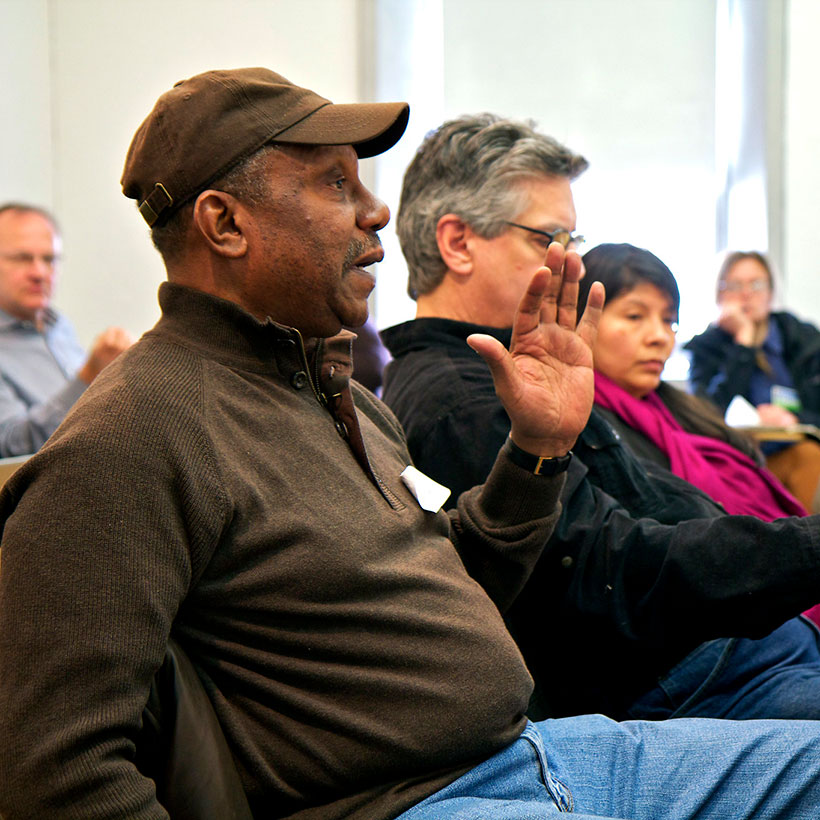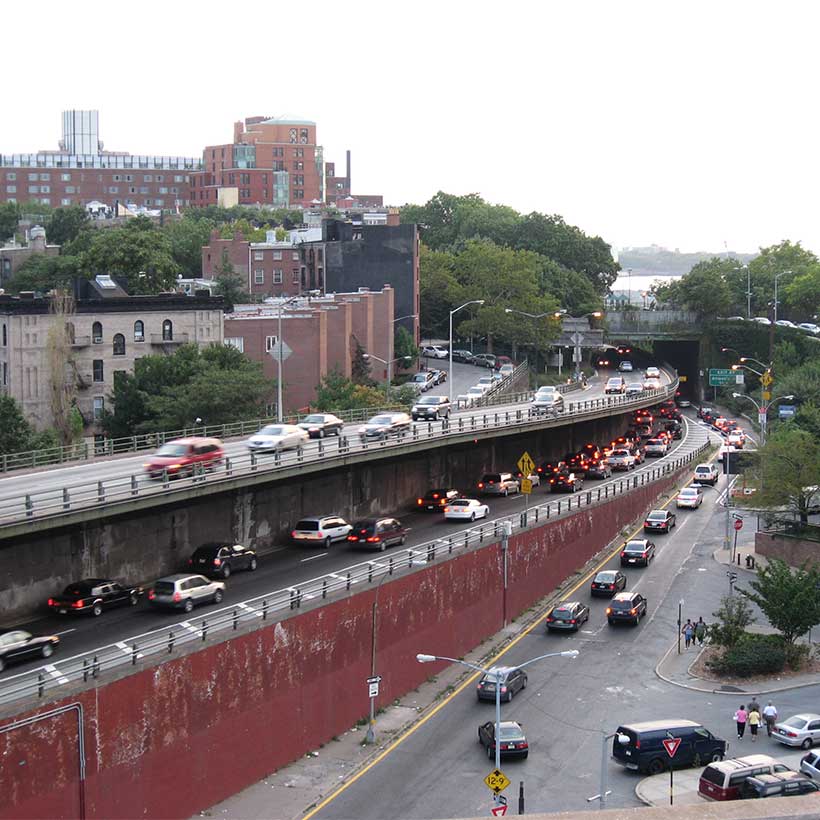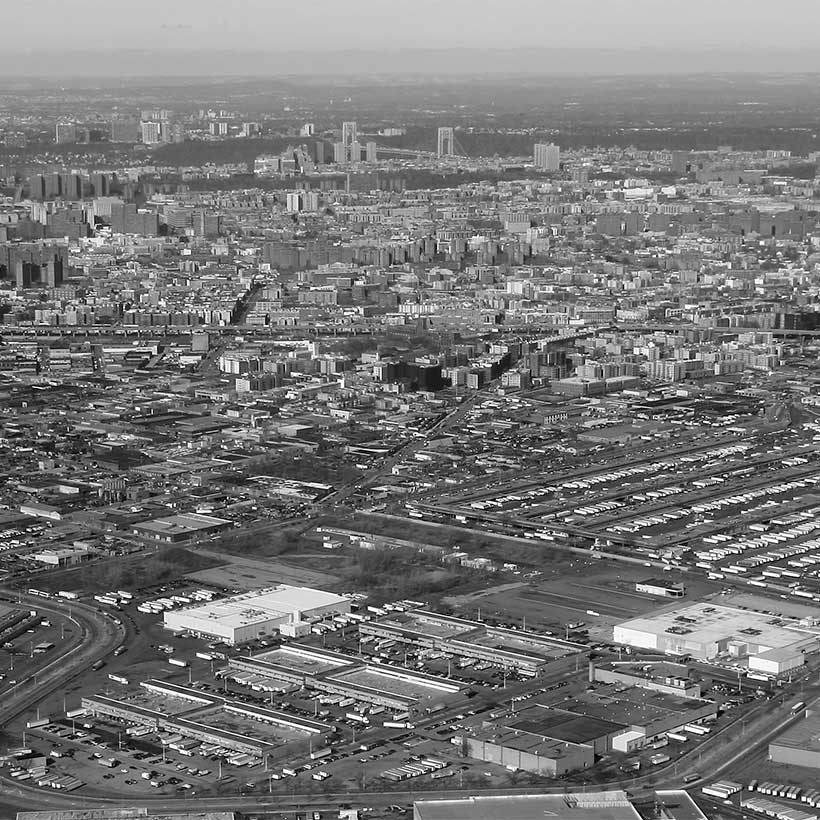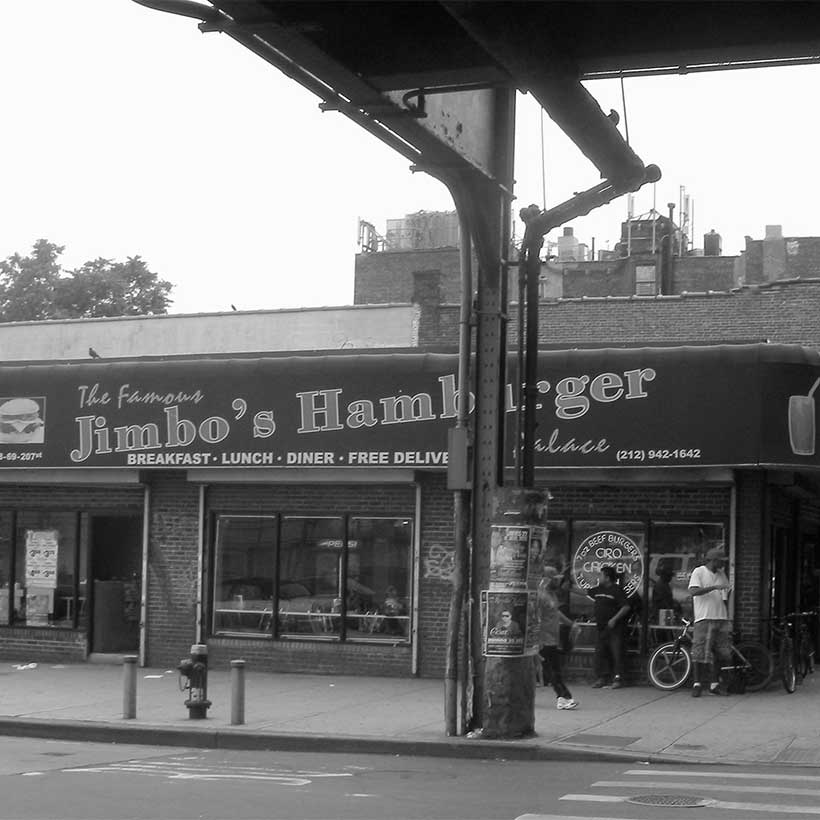President’s Letter: October 2021
Monthly observations and insights from MAS President Elizabeth Goldstein
When I was growing up in the Soundview section of the Bronx, I was totally captivated by the story of the Little Red Lighthouse and the Great Gray Bridge. Written by Hildegarde Swift in 1942, the book tells the tale of the enduring value of the small lighthouse even as it is overshadowed by its neighbor, the Great Gray Bridge. In fact, about a trillion years ago, my family made a special trip down to the north end of Riverside Park to see the Little Red Lighthouse. As a little girl I was thrilled to see the lighthouse that had inspired it all. In fact, I have some early memories about the addition of the lower roadway to the George Washington Bridge, aka the Great Gray Bridge.
My more recent memories of the George Washington Bridge are less magical; focused on the horrendous experience of driving the Cross Bronx Expressway approaches, being dumped into heavy truck traffic, the polluted, hellish stretch of highway underneath the bus terminal, and being extruded onto the Bridge.
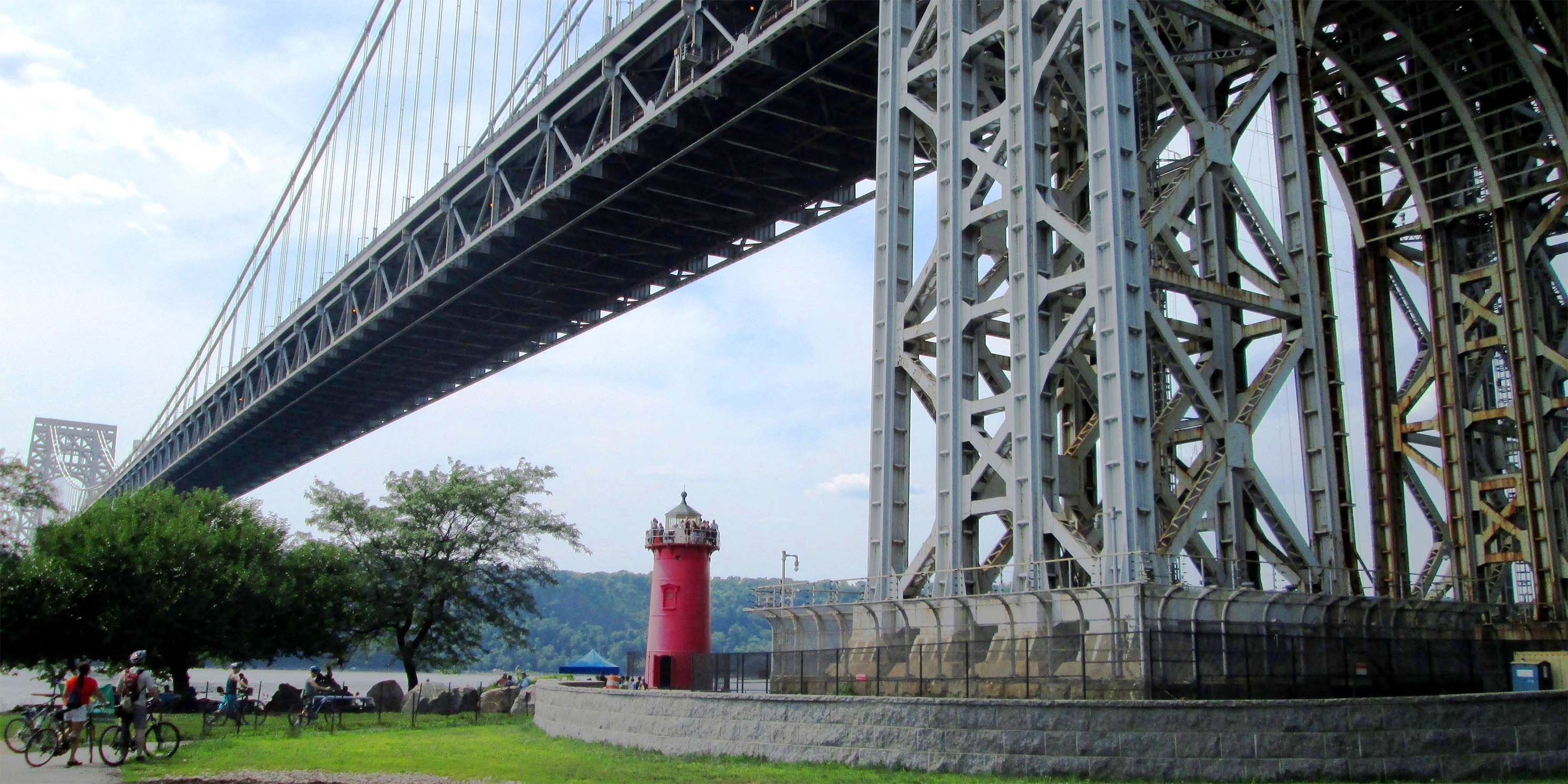
So it was with great pleasure that I accepted an invitation from the Consulate General of Switzerland in New York to participate in a tour to explore the legacy of Othmar Ammann, the Swiss engineer of the George Washington Bridge, on the occasion of the 90th anniversary of the opening of the Bridge. Justin Rivers, of Untapped New York, ably led the tour.
Ammann was the engineer for many of New York City’s most graceful bridges, among them the Whitestone and the Verrazzano Bridge. But one would never call the George Washington Bridge graceful. It is burly and strong. I did not know that Ammann intended it to be clad in granite and concrete. I found original drawings online at the Urban Archive site. The wonderful drawings are in the Museum of the City of New York collection there.
But the Depression and the cost cutting of the day left the heavy metal work exposed. Each of the four long main cables supporting the bridge are made up of more than 27,000 individual wires, manufactured by the John A. Roebling’s Son’s Cable rope company. (Yes, that Roebling.)
Perhaps the most interesting aspect of the birthing of the George Washington Bridge was its location. Ammann’s boss, Gustav Lindenthal, proposed the original north river crossing bridge at 57th Street. However, Ammann argued successfully that the destruction to neighborhoods would be too great and that the bridge location should be farther north, where there wasn’t significant development yet.
How horrible that Ammann’s humanity (and one imagines Swiss efficiency) was matched by Robert Moses’ inhumanity. Access to the George Washington Bridge is now the neighborhood killing Cross Bronx Expressway. How different the Bronx, Upper Manhattan and the experience of the Bridge itself would be today if Robert Moses’ overkill had been thwarted.
I considered living in Fort Washington when I first returned to New York and it was lovely to have the tour start there at the site of the Fort and the highest point in Manhattan at 261 feet above sea level. It is such a wonderful neighborhood and a reminder that there are Palisades on our side of the Hudson River, too.
As we started our descent through the streets of this vibrant neighborhood, the George Washington Bridge started to come into view. I hadn’t looked at the Bridge from this close in many years and out of a car no less. It is a majestic thing. I have seen many of New York’s other bridges from vantage points like subways and ferries, and of course, on foot. This one had eluded me for many years and it was a revelation to see it up close.
As we came across the Henry Hudson Parkway and over the rail lines, we were suddenly in the velvety surrounds of the northern reaches of Riverside Park as it snakes north and south along the Hudson. I was delighted and stunned to see how many runners, walkers, and bicyclists it was drawing, most often by themselves. I remember a time in New York when a park that isolated would not be safe for a woman runner alone, even at 1 pm in the afternoon.
And then we were at the foot of the Bridge looking out over the Hudson River and the Palisades, the muscular eastern footing of the Bridge and my beloved Light Red Lighthouse. The Palisades were graced with the beginnings of fall color and the wide river looked peaceful as a baby blue tug pushed a massive barge upstream as though it weighed nothing. There aren’t many places where you can imagine the estuarine water as it must have looked 300 years ago. But if you look upriver there, you can imagine it.
The day was a reminder of how exploring the city can become an adventure if we let it be. I wish you the very best of fall adventures.

Elizabeth Goldstein
President, Municipal Art Society of New York

